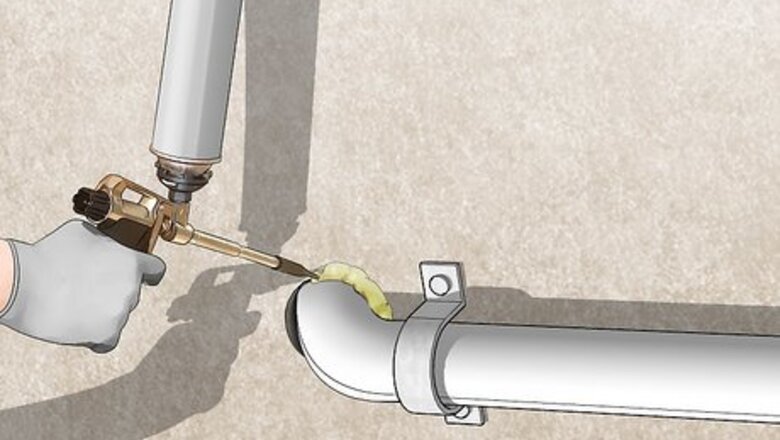
views
Watch for signs of rodent activity.
Gnawed food packages and mouse droppings are common red flags. Check in your pantry, along with your kitchen cupboards and drawers—do you notice any gnawed bags or boxes of food? Take a close look near these food items, too. If mice are active around your home, you might see some small, brown mouse droppings next to their food sources. While you’re at it, keep an eye out for: Small piles of torn paper, dried-up weeds/plants, and/or old fabric—mice use these piles to build their homes, or “nests” Gnawed openings along the base of the wall Keep in mind that mouse droppings are only around ⁄8 to ⁄4 in (0.32 to 0.64 cm) long.
Block off any entry points to your home.
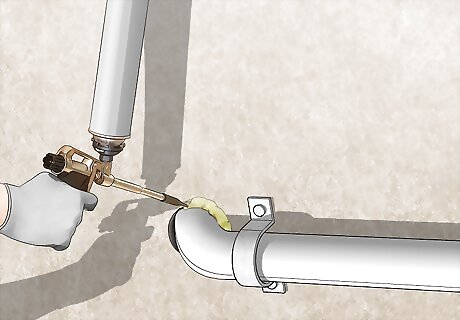
Mice can fit through blueberry-sized openings in or around your home. Sealing off these entry points, however small, is one of the most effective ways that you can permanently keep mice out of your home. Scan both the inside and outside of your home for any gaps, holes, or other openings that seem wide enough for a mouse to squeeze through. Here are a few DIY solutions to get started: Cracks and small holes: Fill in these gaps with quick-drying cement. You can also seal these openings using steel wool that’s held in place with caulk. Holes without wiring: Stuff these holes with a piece of copper mesh pan scrubber. Big holes and openings: Fill in these openings completely with cement, or seal them off with sections of lath screen, lath metal, metal sheeting, or hardware cloth. Doors and windows: Remove and replace any damaged weatherstripping.
Install metal door sweeps.
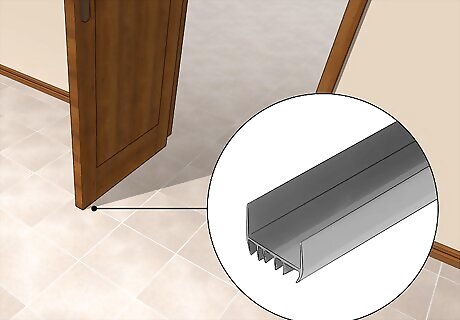
Door sweeps help block any gaps beneath your doors. They come in different materials, but metal is the best option for keeping unwanted critters out of your home. Thankfully, these devices are cheap and easy to find online or at any home improvement store. You can buy a metal door sweep for around $10.
Fix any plumbing leaks in your home.
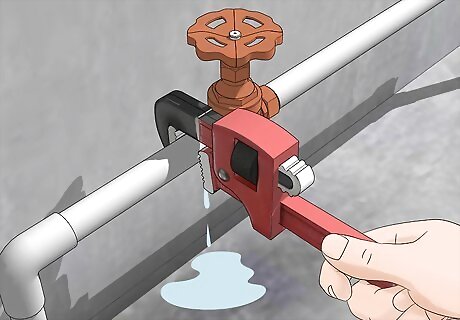
To mice, a dripping faucet or leaking pipe is like a free water fountain. Remove any temptation by fixing up these leaks yourself, or calling a plumber to get the job done. Take a close look at any dripping appliance pipes, too—any water source, however small, could be a popular mouse hangout.
Clean up any food-related messes.
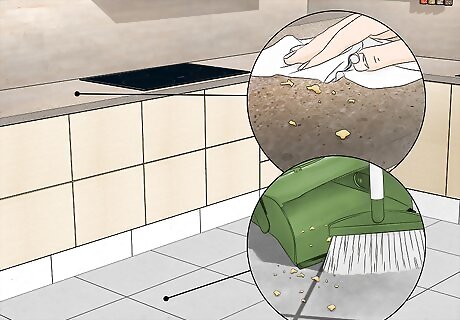
Crumbs, birdseed, and other messes offer mice a free meal. Look around both the inside and outside of your home for some potential food sources. Clean up any messes that you find, like stale bread crumbs around your toaster or scads of birdseed scattered around your backyard. Mice may also be attracted to your: Outdoor grill Leftover dishes in the sink Compost piles
Store leftover food in airtight containers.
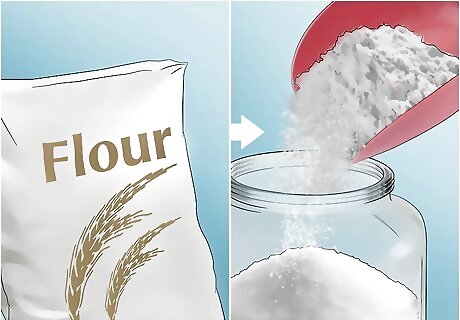
Mice will sniff out and get into food that’s easy to access. Go through your pantry and cupboards and look for any ingredients/foods packaged in paper, cardboard, or another flimsy material. Transfer these foods to sturdy, air-tight containers that mice can’t nibble through. Mice won’t want to hang around a place with no free food.
Clean up any uneaten pet food.
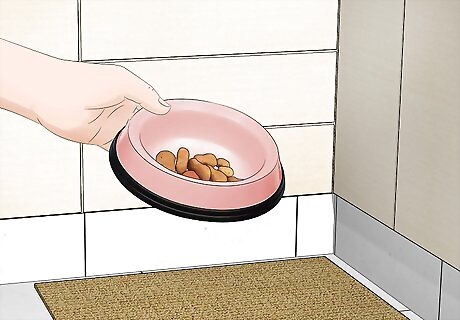
Mice will treat your leftover pet food as a free, all-you-can-eat buffet. Keep an eye on your pet’s food and water dishes throughout the day. If your furry friend doesn’t eat all of the food, toss it out or store it in a sturdy, airtight container. Try to get in the habit of immediately transferring your pet’s dry food to a sturdy container. This way, mice can’t gnaw their way through the bag for a free snack.
Take your trash out frequently.
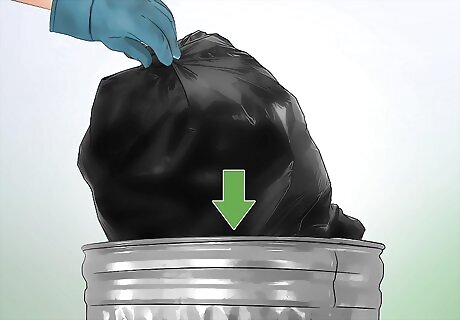
Rodents and trash are peas in a pod. Dump out your trash frequently so the bags in your home aren’t overflowing. Then, securely close and place your outdoor trash cans at the very end of your driveway, so mice won’t be tempted to check out your house after a late night of dumpster diving.
Clean out any clutter in your yard.
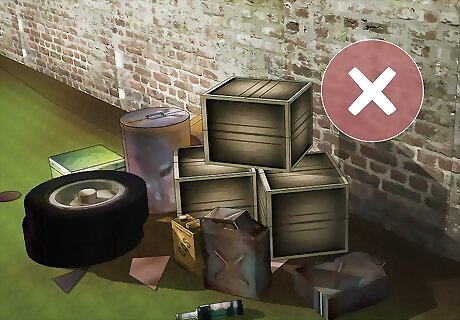
Mice love hunkering down in overgrown brush and piles of clutter. Circle around your yard and take a close look at any bushes, shrubs, mulch piles, and tall grass. Trim down any plants so mice aren’t tempted to take shelter there, and remove any weeds or piles of trash that the critters could use as a hiding spot. If your shrubs and bushes are really close together, consider replanting them a little further apart. This way, mice won’t have a huge shelter at their disposal.
Set up humane or fast-acting traps.
Traps are a great final line of defense in case any mice somehow sneak into your home. Pest control experts suggest using electronic or snap traps, which kill the mice almost instantly. There are also humane options, like catch-and-release traps. Set these traps near any potential entry points to catch any wandering mice. Don’t use glue traps to catch mice. These are very inhumane, and can also trap other unsuspecting animals. Steer clear of any rodenticides. These are lethal to all kinds of animals, including family pets.
Plug in ultrasonic mice repellers.
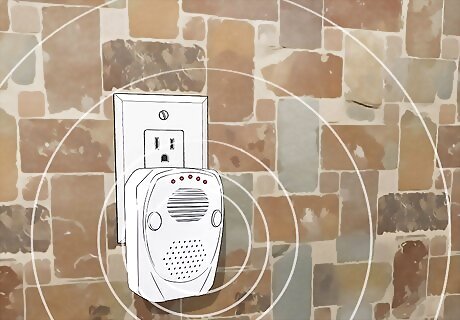
Mice hate ultrasonic sounds and won’t want to be near them. With this in mind, pick up some plug-in, ultrasonic electronics. Simply plug these devices in around your home and let the ultrasonic sounds do the rest! Although these sounds won’t bother you, all nearby mice will definitely hear them! These traps may not be foolproof—some persistent rodents might get used to the frequencies and choose to stick around your home.
Set up a barn owl nesting box in your yard.

Barn owls prey on mice and will be a natural deterrent. Each barn owl actually eats up to 3,000 mice each year, making them a great addition to your yard. Mice definitely won’t want to stick and around and be a predator’s dinner! Hungry Owl Project and Barn Owl Box Company sell premade nesting boxes that you can set up in your yard.
Adopt a cat.

Cats aren’t guaranteed to get rid of your mice, but they definitely can’t hurt. At best, your cat scares off any unwanted intruders and helps keep your home mouse-free. At worst, you have a new feline friend to keep you company!
















Comments
0 comment